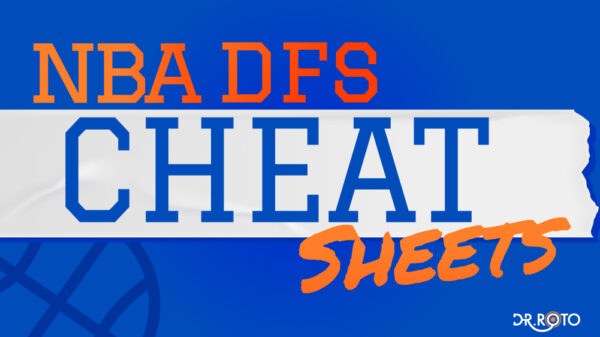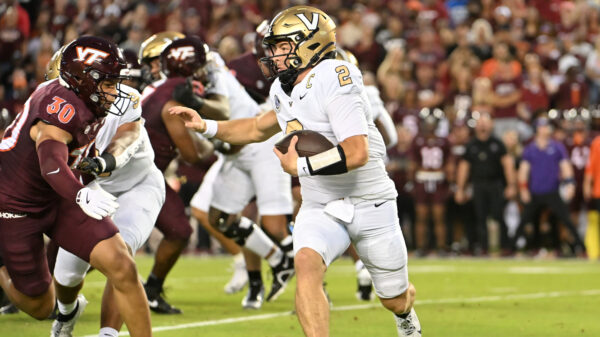2023 was supposed to be the year of the quarterback, and it was. To a degree.
If you had the right kind of quarterback, i.e. one that could run, you were probably fine. MVP candidates like Josh Allen, Lamar Jackson, and Jalen Hurts have all delivered fantastic returns on early-round investments, even getting stronger as the season has gone on.
It’s the non-scramblers that have destroyed fantasy teams, and there were quite a few letdowns taken during the first eight rounds of drafts. From Pro-Bowlers to MVPs, no pocket passers were safe.
How did things go so wrong at QB, and can managers invest in the position with confidence next year?
Heavy Risk vs. Light Reward
At this point, we must acknowledge the few quarterbacks that did thrive without having elite running talent. If you took Dak Prescott (ADP 88) or even Tua Tagovailoa (ADP 93), chances are your team was in a strong position to make the playoffs. Even their success comes with a major caveat: Tagovailoa’s recent stretch of play (QB21 since Week 14) has forced him to the bench in most leagues. Still, Prescott, the current QB3, has as much legitimate league-winning status as any QB could.
That’s about it for the positives, though. Let’s look at the much longer list of disappointments among early-drafted pocket passers:
- Patrick Mahomes (ADP 12, QB7)
- Joe Burrow (ADP 34, QB25)
- Justin Herbert (ADP 41, QB15)
- Trevor Lawrence (ADP 55, QB12)
Half of the offseason’s top eight quarterbacks, via ADP, have fallen way short of expectations. That isn’t unheard of from season to season, but it’s hard to remember the last time we had five quarterbacks fall within the top 35 picks of the draft. Perhaps this was a response to the failed sleeper QBs of 2022. Russell Wilson, Trey Lance, Matthew Stafford, and Aaron Rodgers were trendy late selections at the position, and all four were near-unstartable for most of the season.
It is fair to say that Burrow was injured, or battling injuries, for most of 2023, the main factor in a disappointing Bengals season. That doesn’t mean we can ignore just how bad he looked, and lump him with truly snake-bitten quarterbacks like Kirk Cousins and Aaron Rodgers. Joey B is currently the QB24 in points per game among passers with more than two starts. His 14.7 fantasy points even fall short of his replacement, Jake Browning.
Herbert and Lawrence should still be viewed as young QBs with loads of potential, but it wouldn’t be a shock to see the end of one, or both of their days as a top-eight preseason option. Again, you can blame their season totals on injuries, but neither has lived up to expectations on even a per-game basis, ranking as the QB11 and QB20 respectively.
The big fish on this list is Mahomes, but he’s also the easiest to explain. The general public, this author included, assumed he could make up for a lack of viable receiving options and a changing of the guard at offensive coordinator from Eric Bieniemy to Matt Nagy. Instead, years from now, after Mahomes returns to his typical MVP form, the Chiefs’ 2023 season will be studied as a lesson in how to fail as an offense in spite of a great quarterback. Could Patrick have played better? Sure, but the most drops and second-highest sack rate in football are more likely culprits.
A New Era?
Individual case studies will always be subject to different factors, but this all points to a larger, league-wide shift away from explosive passing plays. Five years after the historic offensive output of 2018, more defenses are keeping plays in front of them. You’ll always have exceptions (try preventing Tyreek Hill from stretching the field), but the numbers don’t lie. 2023 saw…
- The fewest net yards gained per pass attempt since 2006
- The lowest touchdown percentage since 2008
- The fewest passing touchdowns since 2008
- The lowest yards per completion ever, tied only with 2022
How did offenses respond to this evolution in defensive game planning? With more conservative play calling. This season had the third-fewest pass attempts in the last thirty years, as well as the lowest interception percentage in league history.
It’s almost as if, and you won’t believe this, running backs aren’t dead in fantasy, committees be damned. No longer can offenses expect to score in two minutes or less, whether it’s due to two-high safety schemes or something else entirely. There’s no obvious answer, but the numbers don’t lie. Dominating time of possession, and avoiding risk, always the obvious way to control a game, is now the smartest way to build a modern offense.
The NFL is a constant cat-and-mouse game between the opposing sides of the ball. After years of near-unchallenged offensive dominance, defenses are pushing back. How long that remains the case, and to what degree it might continue, are unknown. What we can say is that the myth of the “safe” quarterback who is just a passer is just that: a myth.
As long as fantasy football rewards running quarterbacks more for their gains on the ground than those through the air, they will continue to possess the higher floor. In a league slowly trending toward a steady diet of runs and short passes, it’s impossible to justify drafting an early QB who isn’t an elite dual threat.
2023’s “failed” pocket passers will make for trendy draft targets this summer, but should you snag them before filling out the rest of their roster? At your own risk.





























